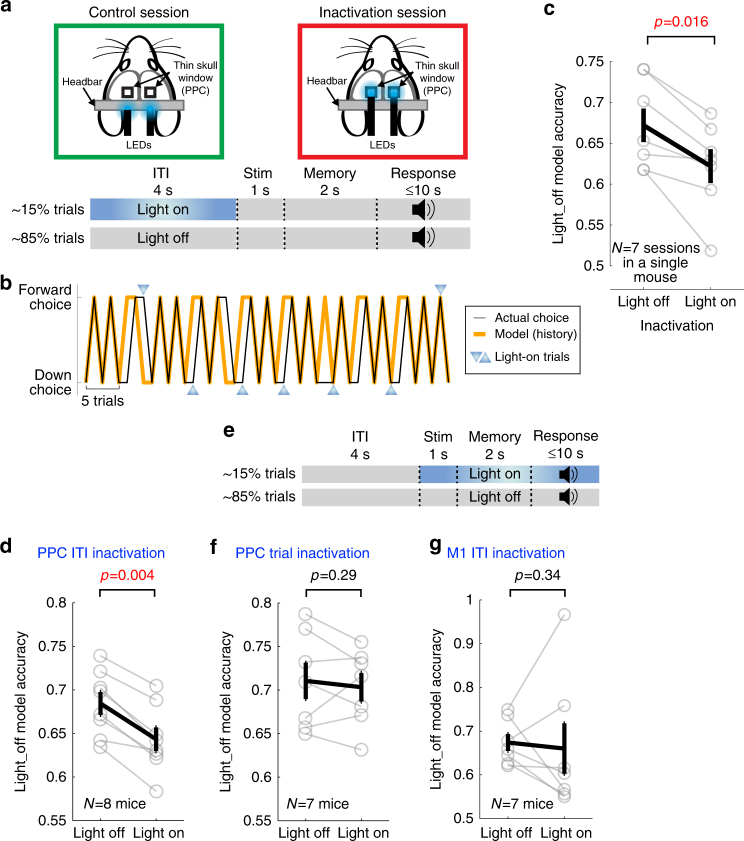Fig. 7.
Inactivating pre-stimulus activity in PPC alters internal bias. a Schematic of inactivation experiment. Control (blue light directed away from PPC) and inactivation (the light directed to PPC) sessions alternated day-to-day (for 14–16 days). Continuous blue light was applied during the ITI in randomly selected trials (15%; light-on trials) in both control and inactivation sessions. b Choice sequence (black) and behavioral model fit (orange) in an example inactivation session. In this example, the mouse tended to alternate choice (i.e., the mouse most heavily weighted the previous choice history) in light-off trials, but this tendency was reduced in light-on trials. c The effect of PPC ITI inactivation on the model fit in seven separate inactivation sessions in a single mouse. Black, mean ± s.e.m. across sessions; gray, individual sessions. Wilcoxon signed rank test. The light-off model was built on a subset of light-off trials and its accuracy was assessed on the remaining light-off or light-on trials. d Average light-off model accuracy in light-off and light-on trials in inactivation sessions. Black, mean ± s.e.m. across mice; gray, individual mice. Wilcoxon one-sided signed rank test. e In trial inactivation sessions, blue light was applied from stimulus onset to the end of randomly selected trials (15%). Trial inactivation does not have a temporal overlap with ITI inactivation. f The same as d, but for trial inactivation in PPC. g The same as d, but for ITI inactivation in M1

